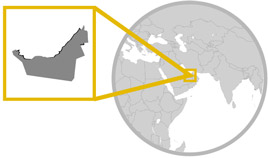Religion
Qatar is an Islamic nation and, with Sunni Islam being the predominant denomination (but also many Shia Muslim communities are present), around 65% of the nation’s population is considered to be Muslim, but this figure seems to be slowly dropping each year. Meanwhile, around 15% of the country’s inhabitants are considered to be Christian of varying denominations (mainly Roman Catholics, Anglicans, Copts, Mar Thoman and Indian Orthodox) which appear to be slowly increasing each year.
Additionally, around 15% of the population follow Hinduism, around 4% are Buddhist and the remaining 1% follows other smaller religions or are Atheists. These have also all been on the rise in recent years alongside Christianity.
Museums, Galleries & Architecture
Noted collectors of both contemporary and Islamic art, the Al Thani family are famous for opening several museums such as the Museum of Islamic Art (opened in 2008 and widely considered to be one of the greatest museums in the world) and the projected Guggenheim and Louvre of Qatar. Qatar is also known for being the largest buyer of art in the world by value.
Opposite the Museum of Islamic Art is the MIA Park which contains a 280,000 square meter seafront in a crescent shape, it includes a sculpture plaza and three kilometres of lighted pedestrian pathways shaded by palm trees as well as a kiosk and two cafés. Additionally, the country contains the Mathaf Arab Museum of Modern Art in Doha’s very own Education City, it contains over six-thousand works of art and regularly holds exhibitions to help engage the academic, art, local and international communities.
Also planned is the National Museum of Qatar which will use a contemporary interlocking disk design to shield visitors from the desert sunlight, the Qatar Olympic & Sports Museum which will preserve, investigate, store and exhibit sports-related objects of the Arab world, and the Orientalist Museum which aims to map the Oriental art from around the world and exhibit them accordingly.
Clothing, Dress Style & Etiquette
Both men and women in the region are expected to dress in a non-provocative way but the dress code is purely driven by customs rather than by government order, as well as being considered more relaxed than other Arabic nations. It is important to mention that in recent years western-style clothing has become far more widespread and acceptable.
Qatari women traditionally wear an Abayah (a long black colored body clothing) and a Shayla (a long black scarf used to cover the head) but also sometimes the Hijab (a black head cover). Older women are also known to wear a Djelabia (a type of long dress) and Sirwal (baggy ankle-length trousers) and may choose to obscure their face with a Shaila (a type of thin scarf) or a Battula (a mask made of reflective calico).
Men traditionally wear the Thoub (a long white or lightly coloured body covering), young boys may wear the Gahfeya (an embroided cap) and older men frequently wear a Ghutra (a folded square cloth worn on the head) and a black coil. During winter it is common for wear to include a Fahrwa (a heavy camel hair or woollen cloak).
It’s also common to have various types of henna (body embroidery) applied in a vast array of patterns traditionally on the hands, arms, feet and ankles.
Literature, Poetry, Music & Dance
Music in Qatar is traditionally based on poetry of the Bedouin people as well as the associated songs and dance. Contemporary music however is a modernization of this and is called Khaliji. Another common music type is the Fann at-Tanbura and includes a ritual often performed with the genre. Belly Dancing and Hasbraki, sort of like Belly Dancing but with a faster tempo and movements, are also extremely popular.
Instrument-wise the Tabl, Murwas, Al Ras and Tar, types of drums and tambourine, respectively, are used for more folk music and during festivals and the Oud and Rebaba, types of stringed instrument, are used for clearer tunes. Bagpipes from Scotland have also become increasingly popular in recent decades. Dance during these festivals includes the Ardah or Ardha, a type of dance used to display a lot of energy performed by men with swords and sticks, usually accompanied to by drums and Arabian Flutes. Another type of dance, the Khanmary, is performed by a group of women in masks typically at weddings.


